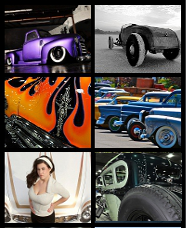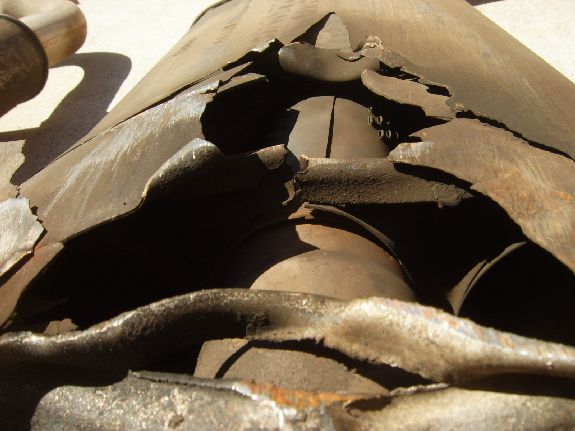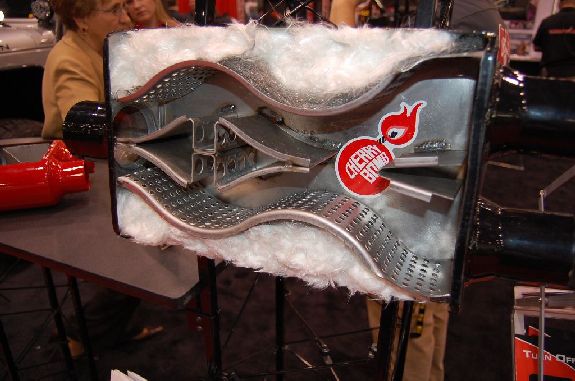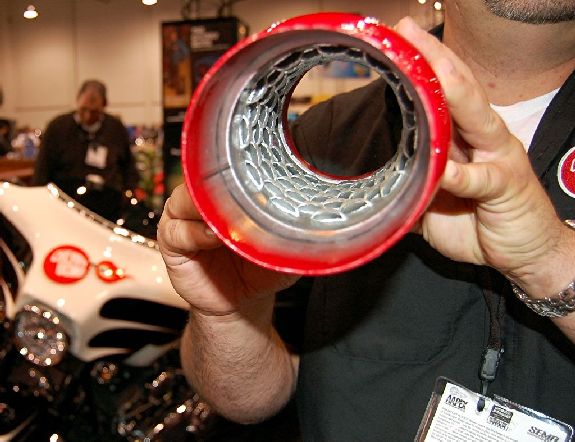Exhaust 103 How-to: Mufflers, “More than Meets the Ear”
Saying that there was a hole in my muffler would be an understatement. My muffler was torn up! This happened from years of scrapping over bumps. Me being the car-learning girl that I am, I thought “muffler…that just quiets noise, right?” Wrong! When it comes to mufflers, there’s much more than meets the ear. Follow along with me as I not only learn about and change my mufflers…but actually get to make a pair of custom glass-pack mufflers!
When we’re talking about mufflers, we’re talking about part of the car’s exhaust system. One thing exhaust systems do is carry the fumes created by the engine’s combustion out of the engine. But what makes exhaust systems so important is that the way in which those fumes are carried out affects the pressure (a.k.a. backpressure) of the engine. And backpressure has everything to do with the performance of the engine.
When choosing a muffler, it’s not only the muffler but the entire car and exhaust to take into consideration. A few things to think about are:
- Engine size
- Level and pitch of sound desired
- Pipe size
- Ground clearance
While I was at SEMA this past year, I got the chance to talk with some of the guys over at Cherry Bomb and got an inside look at mufflers. What I found out is that mufflers have varied configurations of obstacles within them. This could be caused by metal plates, baffled metal tubing, and/or fiberglass or other packing material. All of these obstacles affect both the sound and backpressure.
If you’re running without mufflers, that’s called straight pipes, which will be very noisy. If you have a narrow exhaust and/or a very small muffler, the hot air from the engine is being pushed through at a higher pressure, which results in a higher pitched, sharper sound. Widening the exhaust and/or increasing muffler size gives the air time to cool slightly before exiting and slows it down, creating a deeper sound.
So how does this affect performance? Your engine is happiest when the air it’s pumping out is exiting in balance with its power/output. Your exhaust is one component of this. The manifolds, headers, and tuning of your engine are major components of this as well. The great thing about a classic car/hot rod set up is you have so much control in the tuning of your engine!
The classic Cherry Bomb-style muffler and what we custom-made for Stude at B&C Industries is what’s called a “glass-pack.” It gets this name because it’s essentially a baffled tube inside a larger tube with fiberglass packed into the middle. Making these suckers was way easier than I imagined (with the proper machines of course!)
First you roll a baffled tube in fiberglass (don’t get let this stuff touch your skin, ouch!) You then place that tube within a larger tube. Using a special pressing machine along with a proper tube-fitting or die, the ends of the outside tube are bent down upon the size of the inner-tube (which will also match the inlet/outlet size of your exhaust. Grease is applied at the places where the die presses in on the metal.
Waaalaah, it’s as easy as that! The set of glass packs B&C Industries made for me are 14 inches long with a 2 ½ inch inlet/outlet opening to match my headers and exhaust. I’ve been more than happy with how my new mufflers and exhaust have affected the performance of my hot rod Studebaker! If you’ve been waiting to tackle your exhaust… don’t wait any longer!
B & C Industries 538 E Central Park Avenue SouthAnaheim, CA 92802-1472
(714) 635-3622 bcindustriesinc.com
Have an easy way to explain muffler-sound or a muffler-related tip? Leave a comment and share it with us!











